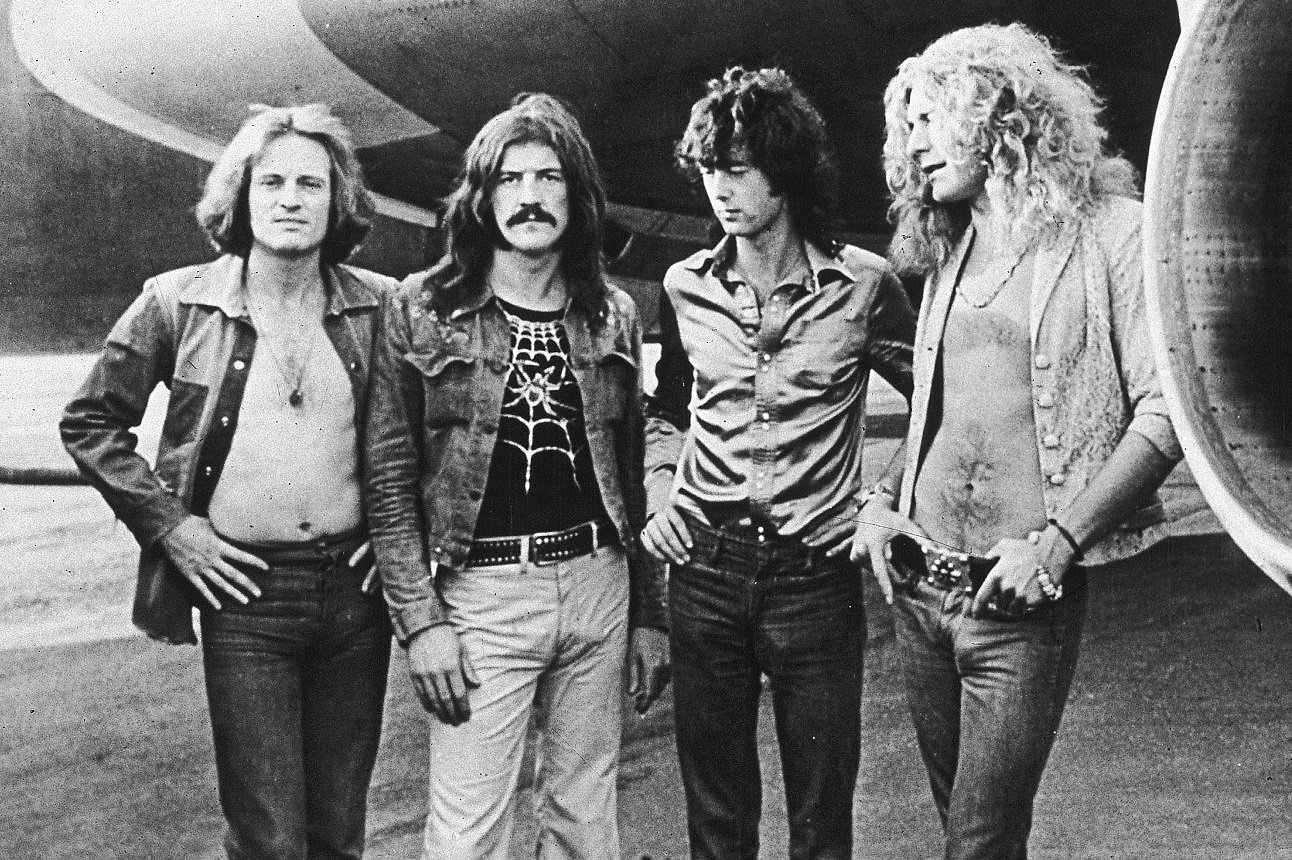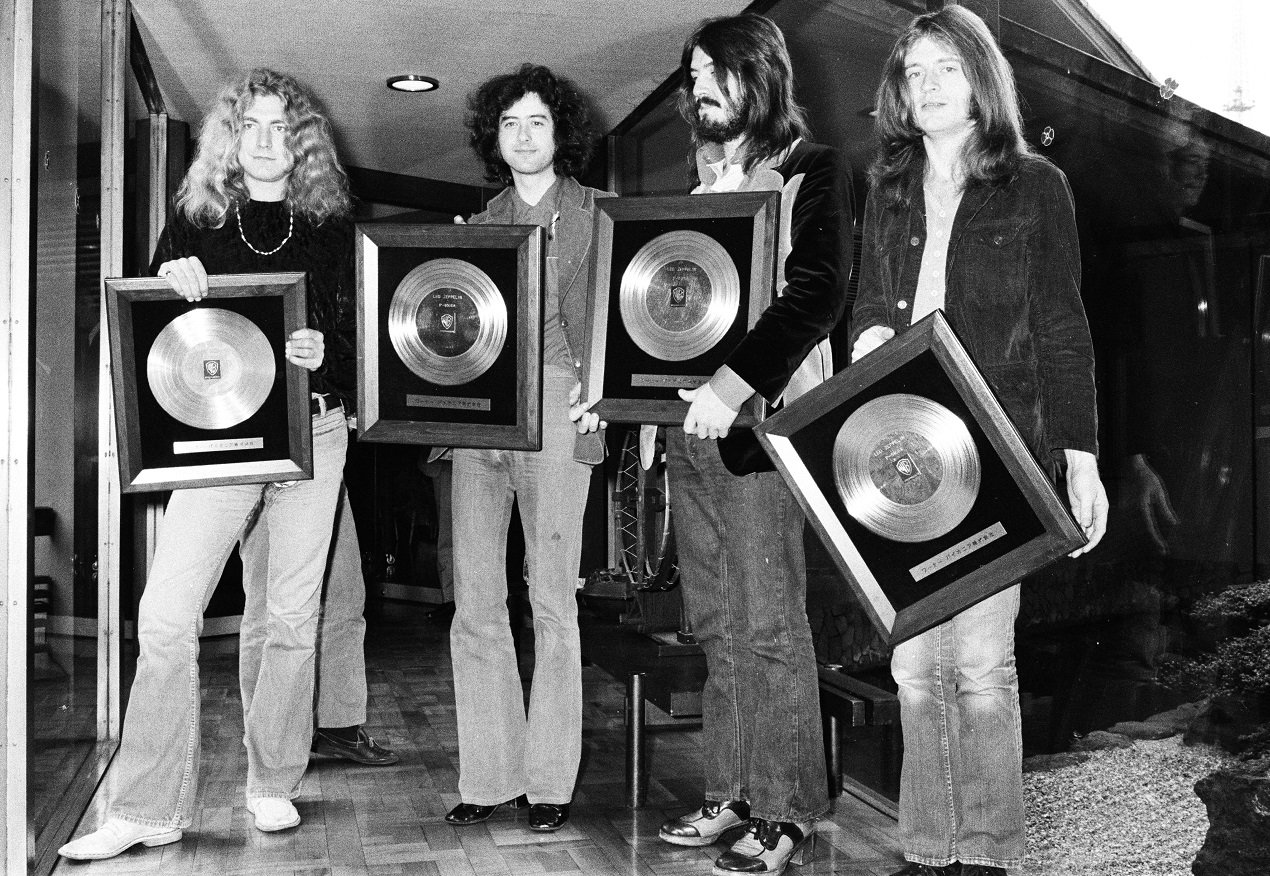Why Led Zeppelin Didn’t Feel Any Competition With the Rolling Stones in the ’70s
Long before Led Zeppelin formed — even before the Rolling Stones had a name — a young guitar player named Jimmy Page met a couple of guys named Keith Richards and Mick Jagger on a blues package-tour. At least that’s how Page (who’s known for his memory) recalled it.
Page drew on that famed memory for the release of “Scarlet,” an old Stones track featuring the guitar legend that saw the light of day for the first time in July 2020. Jagger, whose memory was fuzzy on the particulars of that ’74 session, was glad to have Page remind him of the details.
To fans of Zeppelin and the Stones, the interaction probably didn’t come as a surprise. Over the years, the two bands always seemed to be on good terms, even at the peak of their careers in the ’70s. And the good vibes continued in the decades after the demise of the Zep.
Led Zeppelin’s Jimmy Page played with the Rolling Stones in the ’60s, ’70s, and ’80s

After meeting Jagger and Richards in the early ’60s, Page turned up at a ’64 Stones session. At the time, the band was working on a demo for “Heart of Stone.” In his role as ubiquitous session ace, Page played guitar at the date. (The Stones released the recording in 1975.)
By the end of the ’60s, Jagger and the Stones took notice as Page’s new band topped the U.S. charts with Led Zeppelin II. In 1971, when Zep went to work on the band’s blockbuster fourth album, “sixth Rolling Stone” Ian Stewart (aka “Stu”) played on two tracks at the session.
Originally, Stewart had come to deliver the Stones’ mobile recording studio. But he ended delivering a few dynamite parts on “Rock and Roll” and “Boogie With Stu.” A few years later, Page returned the favor on “Scarlet” after he heard Stewart would be at the Stones session. (Apparently, he wasn’t.)
But Page recalled liking the tune Richards played that day in ’74 and got to work on the track. The following day, Page rejoined the group and laid down a solo that sat in the vaults another 46 years. In the ’80s, after Zep was no more, Page again played with the Stones on “One Hit (to the Body).”
Zeppelin and the Stones continued their professional relationship through the ’70s

After the success of Led Zeppelin IV, the band again turned to Jagger and the Stones for a recording facility. On that occasion, the band rented Jagger’s mansion Stargroves and used the Stones’ mobile studio. And Houses of the Holy (1973) became another smash hit.
In 1976, the two megagroups brushed up against one another in Munich, where Zep recorded Presence in under three weeks. This time, Page contacted Jagger for a favor: He needed three more days in the studio, which the Stones had reserved after Zep. Jagger agreed.
All things considered, it’s hard to imagine such big bands getting along better. When Cameron Crowe asked Page about any competition existing between Zep and the Stones, Page didn’t see it. “I don’t feel any competition at all,” he said in 1975. “The Stones are great and always have been.”
But Page couldn’t resist acknowledging Zep’s commercial supremacy. While the Stones held an advantage among the fashionable set, nobody sold like Led Zeppelin in ’75. “I know all about how we’re supposed to be the biggest group in the world and all, but I don’t ever think about it,” Page told Crowe.


